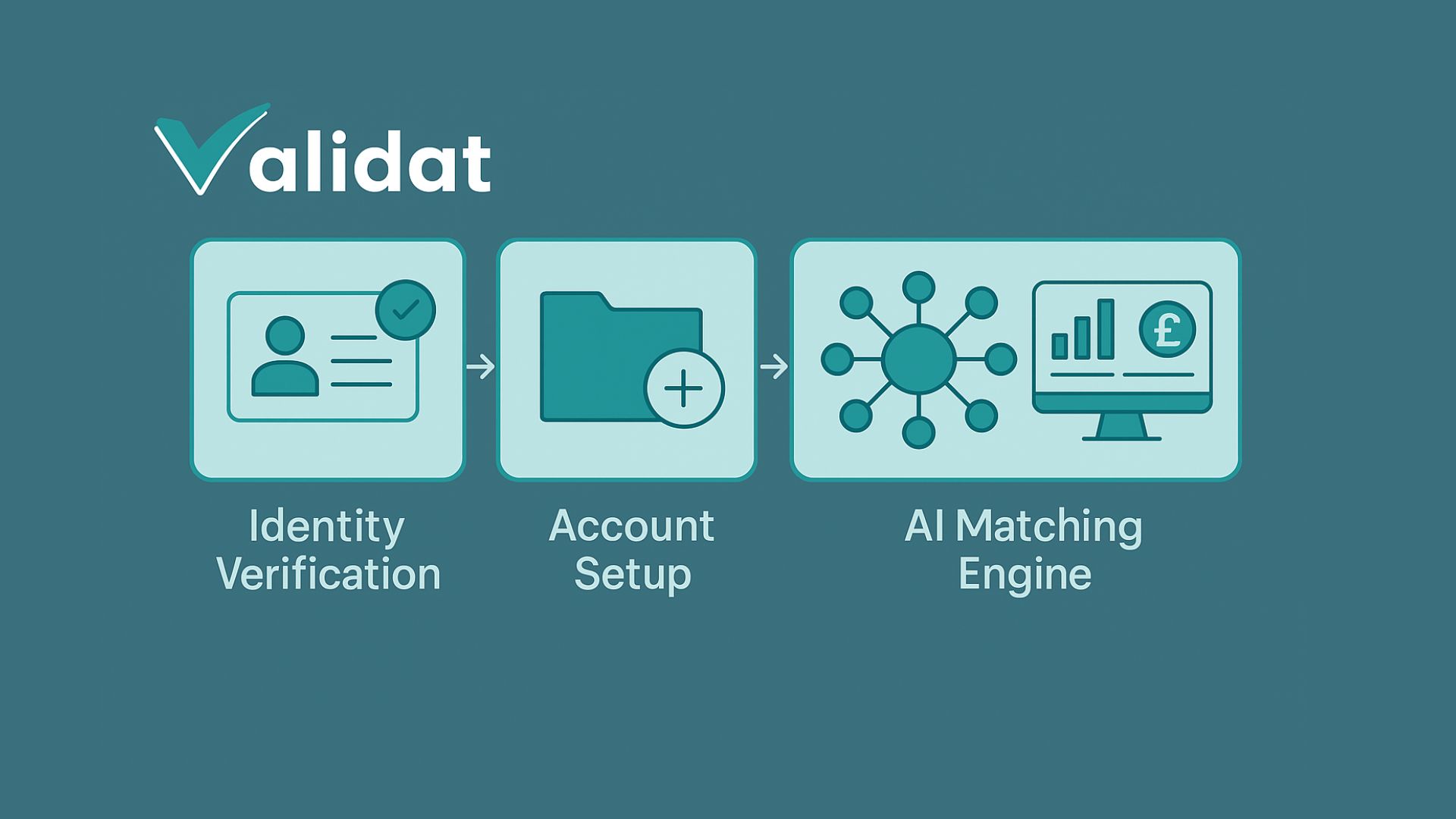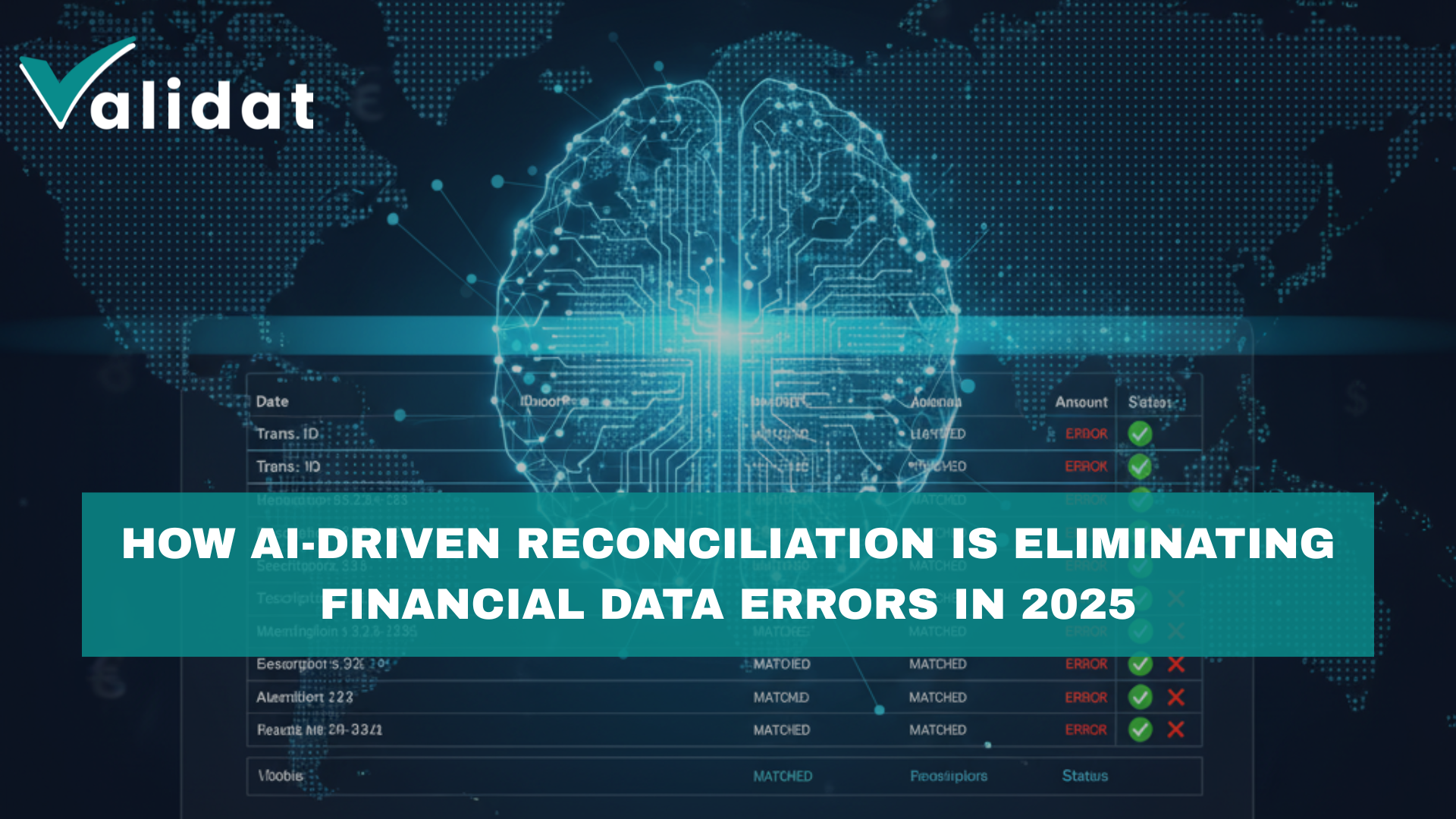KYC Automation & AI-Driven Reconciliation for Banking: How to Future-Proof Financial Workflows

In 2025, banks and fintechs face a stark reality: manual identity verification and reconciliation processes are no longer sustainable. Growing transaction volumes, stricter regulatory demands, and increasing fraud risk demand smarter, faster systems. This is where KYC automation and AI-powered reconciliation come together — streamlining onboarding, reducing errors, and unlocking efficiency at scale.
In this article, we’ll cover:
- Why traditional KYC & reconciliation workflows are broken
- How AI and automation solve them
- Key architecture & workflow components
- Metrics that matter
- Use cases & examples
- How Validat’s platform ties it all together
- Best practices & future trends
The Problem: Legacy KYC & Reconciliation Workflows
KYC / Onboarding pain points
- High drop-off rates when onboarding is too complex
- Manual document verification is slow and error-prone
- Regulatory complexity across jurisdictions
- Integration friction with multiple identity providers
Reconciliation / banking challenges
- Disparate data sources and mismatched formats
- High transaction volumes with manual resolution
- Delays in financial close and liquidity visibility
- Weak audit trails under regulatory scrutiny
The Solution: AI + Automation for KYC & Reconciliation
KYC / Onboarding automation
- OCR and document intelligence for ID verification
- Facial recognition and liveness checks
- Rule-based and AI-driven risk scoring
- API orchestration for watchlist and sanctions checks
- Continuous monitoring for behavioural risk
Banking reconciliation automation
- Pre-built connectors to banks and payment systems
- AI-driven transaction matching (exact, fuzzy, ML-based)
- Real-time reconciliation and streaming architecture
- Exception management workflows with audit trails
- Liquidity forecasting and compliance dashboards
Architecture & Workflow
A modern workflow looks like this:
User → Document Upload → Identity Verification → Account Created → Transaction Flows → AI Matching Engine → Dashboard & Alerts
Key enablers:
- Event-driven architecture for real-time processing
- Modular microservices for KYC, matching, and exception handling
- Continuous model retraining to improve accuracy
- Unified dashboards for compliance teams
Metrics & KPIs That Matter
- Match rate (STP %): % of transactions reconciled automatically
- Exception rate: % of transactions needing manual review
- Onboarding drop-off rate: % of applicants abandoning the process
- Fraud incidents prevented
- Cost per transaction / customer
- ROI timeline: typically within 6–9 months
Validat’s reconciliation solution reduces operational cost by ~50% with ROI in 9 months.
Use Cases & Industry Examples
- Fintech startups launching multi-currency wallets
- Banks modernising legacy reconciliation systems
- Crypto exchanges requiring robust KYC
- Payment institutions needing real-time cash views
- Gaming platforms processing high-volume microtransactions
How Validat Enables This
- Customer Onboarding: flexible onboarding flows, multiple wallet & currency options
(Validat Onboarding) - Reconciliation & Banking: real-time reconciliation, pre-built integrations, 99% match accuracy
(Validat Banking Reconciliation) - Modular, API-first infrastructure that plugs directly into existing systems
- Dashboards, exception workflows, and full audit trails
Best Practices & Pitfalls to Avoid
- Normalise data before matching
- Hybrid approach: AI automation + human review for edge cases
- Retrain ML models with real feedback
- Ensure compliance reporting is built-in
- Phase rollout to reach 80% automation before pushing further
Future Trends
- LLMs for anomaly detection in reconciliation
- Explainable AI to satisfy regulators
- Privacy-preserving ID verification with zero-knowledge proofs
- Blockchain-based shared ledgers for cross-bank reconciliation
- Instant payments paired with real-time reconciliation
Closing Thoughts
By combining KYC automation and AI-driven reconciliation, banks and fintechs can reduce friction, cut costs, and strengthen compliance. Validat provides the infrastructure to deploy these capabilities today, enabling faster scaling and regulatory peace of mind.
👉 Book a demo with Validat to see how AI and automation can transform your financial workflows.
Latest Posts

How AI-Driven Reconciliation Is Eliminating Financial Data Errors in 2025


